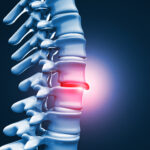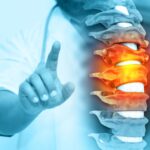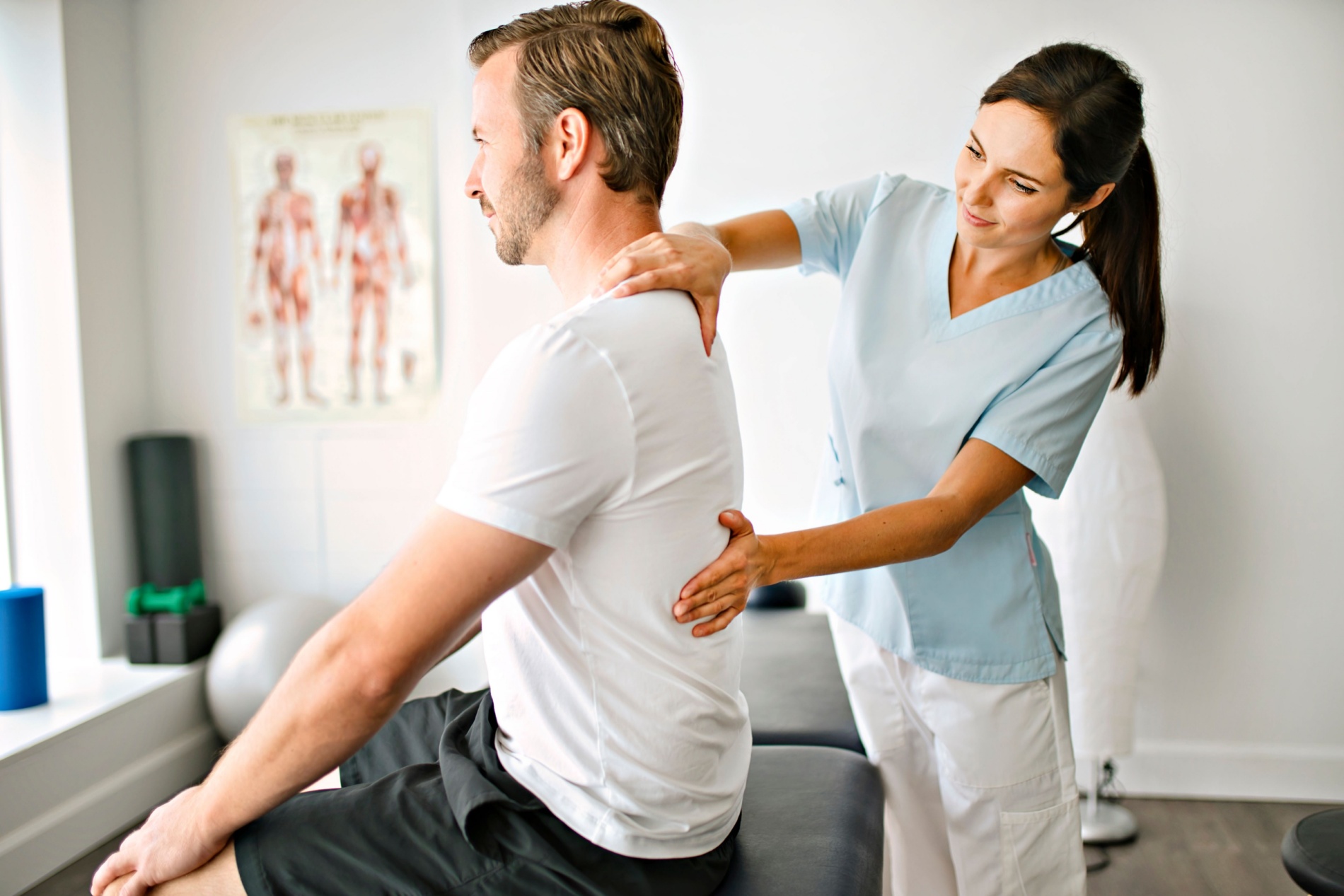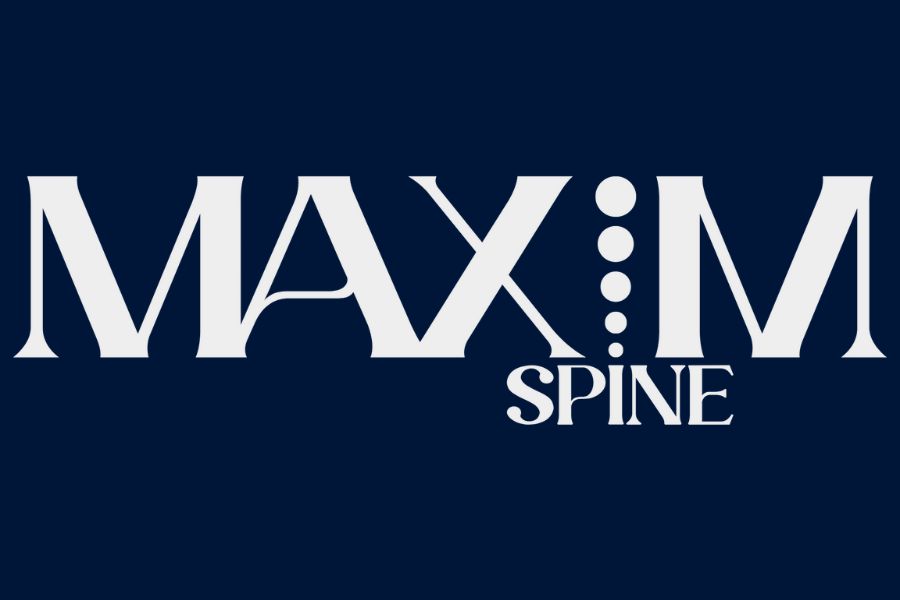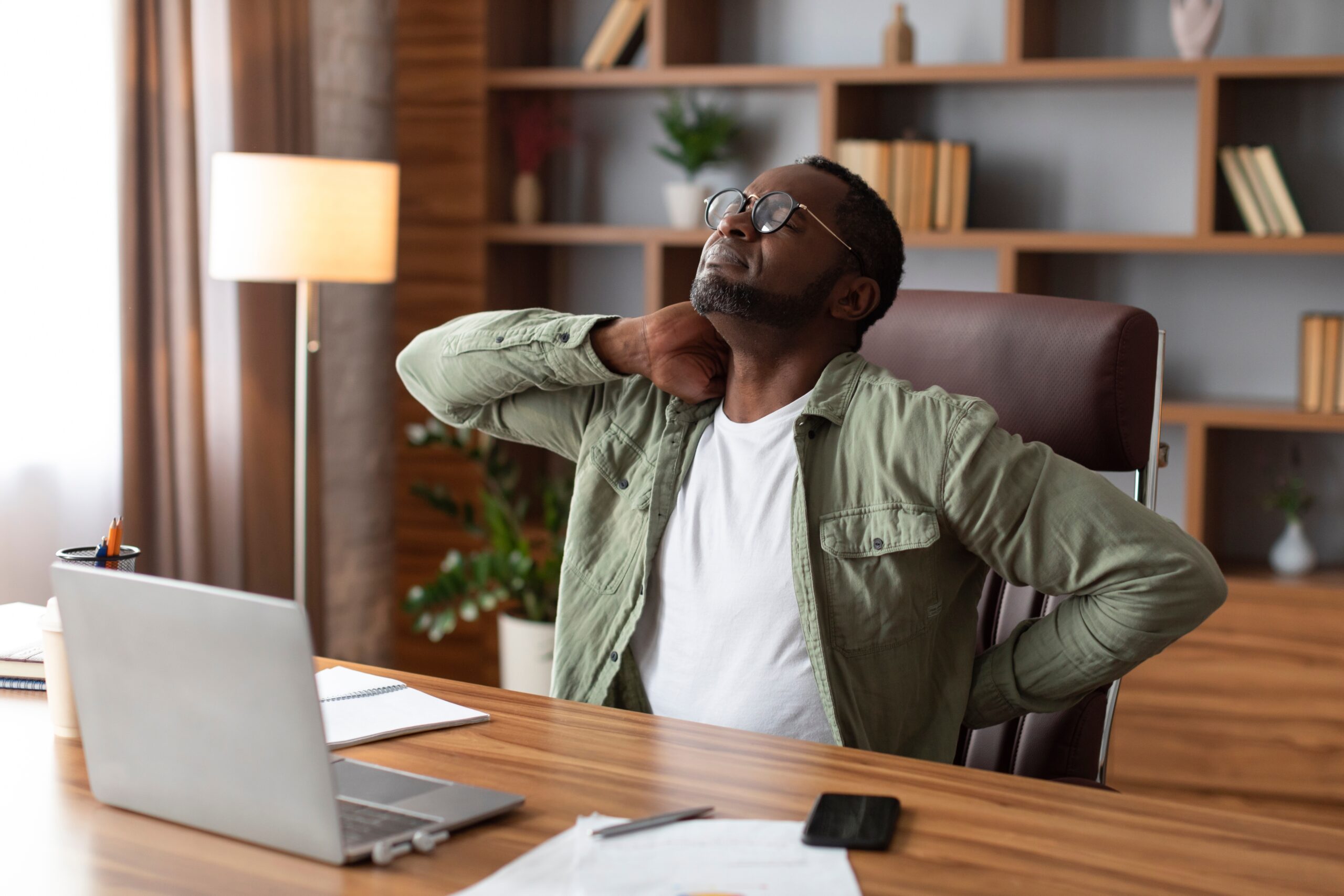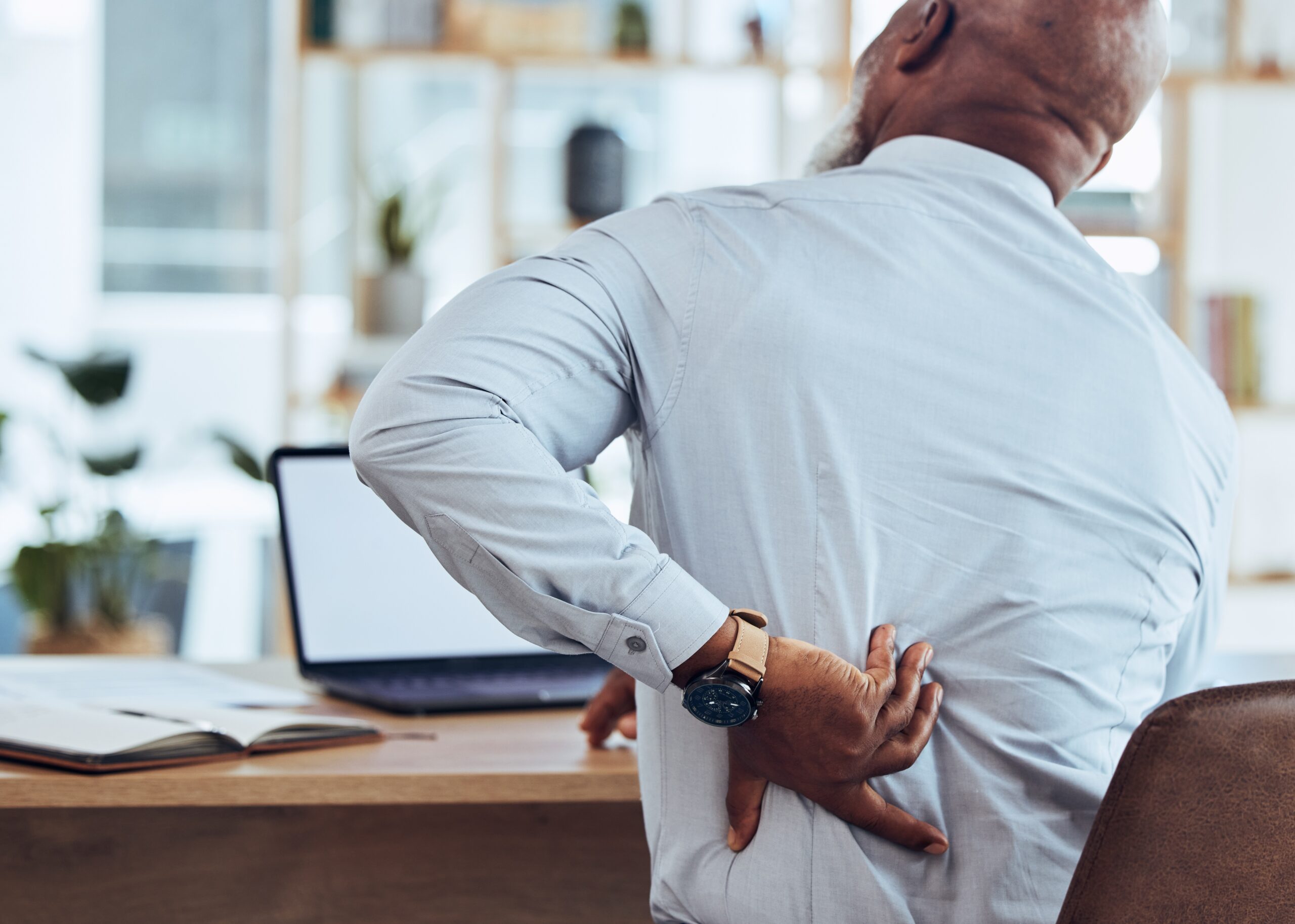
Managing Back Pain: Lumber Stenosis & Other Conditions
If you’re experiencing difficulties in your lower spine and managing back pain, you’re not alone. Back pain is a widespread issue, ranking among the top reasons for doctor visits and missed workdays. Even young adults and children can be affected.
Your pain can vary from a persistent dull ache to sudden, sharp sensations. It might strike unexpectedly due to an accident or heavy lifting, or gradually emerge with age. Even a sudden increase in exercise after a period of inactivity can trigger back pain.
According to the National Institutes of Health’s Low Back Pain Fact Sheet, there are two types of pain:
- Acute back pain typically lasts from a few days to several weeks. It’s the most common type of back pain and usually resolves on its own with self-care, leaving no lasting functional impairment. In some cases, it might take a few months for symptoms to fully disappear.
- Chronic back pain persists for 12 weeks or more, even after the initial injury or cause of the acute pain has been addressed. Approximately 20 percent of individuals with acute back pain go on to develop chronic back pain that lasts at least a year. However, even persistent pain doesn’t always indicate a serious underlying medical issue, or one that’s easily diagnosed and treated.
In some cases, treatment successfully relieves chronic low back pain, but in other cases the pain will continue despite medical and surgical treatment. The institute defines chronic low back pain as pain lasting at least 12 weeks, even after the initial cause has been treated.
Effective pain education is crucial in helping patients understand and manage this condition.
Lumbar Stenosis and Managing Back Pain
Managing back pain and learning about Lumbar Stenosis go hand in hand. Spinal Stenosis is a common condition characterized by the narrowing of the spinal canal, leading to pressure on your spinal cord and nerve roots, according to the National Library of Medicine.
Stenosis is primarily caused by degenerative changes associated with aging, such as Osteoarthritis, disc herniation, and thickening of your ligaments. Other contributing factors may include congenital conditions, trauma, and tumors.
The prevalence of Spinal Stenosis increases with age, affecting approximately 8 – 11 percent of individuals over the age of 50. Lumbar Stenosis in the back is the most common form, followed by Cervical Stenosis in the neck.
The narrowing of the spinal canal can result in compression of the spinal cord and nerve roots, leading to a range of symptoms, including pain, numbness, tingling, and weakness in the extremities. In severe cases, it can cause bowel or bladder dysfunction.
A thorough patient history, including the nature and duration of symptoms, is crucial in diagnosing Lumbar Stenosis. A physical exam may reveal sensory and motor deficits, decreased reflexes, and other signs. Imaging studies, such as X-rays, MRIs and CT scans, play a vital role in confirming your diagnosis and assessing the severity of stenosis.
Managing your Lumbar Stenosis will depend on the severity of symptoms and the impact on your quality of life. Untreated Spinal Stenosis can lead to progressive neurological deficits, including weakness, paralysis, and loss of bowel or bladder control.
Differentiating Between Stenosis and Other Conditions
Spinal and Lumbar Stenosis can mimic other conditions that have you managing back pain, including Peripheral Neuropathy, herniated discs, and vascular claudication. A careful evaluation is key to differentiating between these conditions and making sure you receive proper treatment.
The prognosis depends on the severity of your condition and the presence of other comorbidities. However, with the right procedures and management, most patients with stenosis can experience significant improvement in their symptoms and quality of life. Treatment may include:
- Physical therapy. This improves strength, flexibility, and posture.
- Medications. This may include analgesics, anti-inflammatories, and muscle relaxants to manage pain and inflammation.
- Epidural steroid injections. This can provide temporary pain relief.
Patients may consider surgery, or at least those with severe or persistent symptoms. Some common surgical procedures include:
- Laminectomy. This procedure removes of the lamina, or back part of the vertebra, to create more space for your spinal cord and nerves.
- Foraminotomy. This surgery widens the openings where your nerve roots exit the spinal canal.
- Spinal fusion. This joins two or more vertebrae together to stabilize the spine.
Deterrence and Patient Education for Managing Back Pain
Patient education plays a crucial role in managing back pain. Patients should be advised on proper posture, exercise, and weight management to prevent further progression of the condition. Effective management of Lumbar Stenosis can require a multidisciplinary approach involving various spinal specialists, health care professionals, physicians, physical therapists, and occupational therapists.
Nonetheless, proper posture is essential for managing back pain and spinal stenosis:
- Good posture helps distribute weight evenly across the spine, minimizing stress on specific areas.
- It can alleviate pressure on nerves and soft tissues, reducing pain and discomfort.
- Educating yourself about maintaining correct posture during daily activities can prevent further progression of Lumbar Stenosis.
Regular exercise is vital for managing spinal pain:
- It helps strengthen muscles that support your spine, improving stability.
- Specific exercises can increase flexibility and range of motion, which may help alleviate symptoms of Spinal Stenosis.
- Low-impact activities like walking, swimming, or cycling can improve overall fitness without putting excessive strain on your back.
Overall, staying active and avoiding prolonged rest can also help. Gradually increasing exercise intensity and duration is something to remember, as well as performing targeted exercises prescribed by back pain specialists.
In the end, maintaining a healthy weight is crucial for managing pain. Excess weight puts additional stress on the spine, potentially exacerbating symptoms. Weight loss can reduce pressure on your lower back and potentially slow the progression of Lumbar Stenosis.
Don’t forget: a balanced diet combined with regular exercise can help you achieve and maintain a healthy lifestyle.
A Powerful Non-Opioid Pain Management Pathway
When managing back pain, the importance of non-opioid treatment as a safer and more sustainable approach to relief shouldn’t be overlooked. As research and awareness continue growing, many specialists hope these methods will become increasingly prevalent and accessible, offering solid alternatives to opioids for those suffering from pain.
Fortunately, there’s an increasing focus in society on non-opioid pain management methods as an alternative to potentially addictive opioids, according to Jersey’s Best. This shift is largely driven by the ongoing opioid crisis and dangers of over-reliance on these medications:
More notably:
- Understanding the issues surrounding non-opioid pain management is important today. This approach involves using medications other than opioids, as well as non-medication therapies.
- Noting the benefits is key. Non-opioid methods aim to provide effective pain relief while minimizing the risk of addiction, overdose, and other serious side effects associated with opioids.
- Having an awareness of different medications is essential. Knowing the difference between over-the-counter options like Acetaminophen and Ibuprofen, along with prescription medications such as antidepressants, anticonvulsants, and muscle relaxants, is important.
- Knowing the power of non-medication therapies is vital. This category includes physical therapy, occupational therapy, acupuncture, massage therapy, relaxation techniques, and cognitive-behavioral therapy. These approaches target the underlying causes of pain and promote self-management skills.
For many patients, a comprehensive pain management program can combine various treatment modalities, including medications and non-medication therapies. It addresses the physical, emotional, and psychological aspects of pain and empowers patients to take an active role in their recovery.
Of course, spine specialists and health care providers play a critical role in educating patients about non-opioid options and developing personalized treatment plans. Open communication and collaboration between you and your provider are essential for successful pain management.
Does Education on Managing Back Pain Help Patients?
A February 2020 study in the Journal of Sports Rehabilitation examined whether lower-spinal pain education can benefit patients who are managing back pain. Researchers reviewed eight relevant research reports, half of which involved exercise therapy alone, while the other half combined exercise therapy with pain education.
“The researchers advise that pain education offers a more well-rounded approach to providing effective treatment to patients,” states a synopsis by USC’s Keck School of Medicine. “Of the eight initial studies they reviewed, three met the inclusion criteria that they were looking to evaluate. Two out of those three studies reported that the patients had reduced symptoms of chronic low back pain with therapeutic exercise and pain education.”
Researchers concluded that combining pain education with exercise therapy for chronic low back pain has proven moderately effective. They’ve recommended incorporating educational sessions into pain management strategies to improve patients’ understanding of what’s going on in their spinal column.
“Pain education may help patients in facing their chronic illness,” the school says.
Maxim Health knows that pain education should cover a range of topics to empower patients in their pain management journey. Spinal and pain specialists should fully educate you on their:
- Diagnosis. A clear explanation of your specific condition will do wonders.
- Treatment options. A detailed discussion of available treatments, including benefits and potential risks, is important for tailored solutions.
- Prevention strategies. Strategies to avoid exacerbating pain and promote healing are important to follow.
- Expert opinion of side effects. Patients should take note of potential effects of medications or treatments.
- Alternative therapies. You should explore alternative approaches to pain management.
- Pain measurement techniques. This is necessary for tracking pain levels and reviewing your progress.
- Self-management tools for patients. Skills to help you actively manage your pain are paramount.
Maxim Health
Managing back pain is difficult. Are you looking for specialized procedures? This is where our groundbreaking approach intersects with your needs.
Maxim Health is a beacon of innovation. Our comprehensive focus brings together luminaries in spine surgery for an unparalleled experience in care, expertise, and attention.
With an extensive track record of successful and intricate procedures, Maxim Health is also at the forefront of surgical solutions. We help patients regain control of their lives, from non-invasive interventions to the latest advancements in pain relief.

